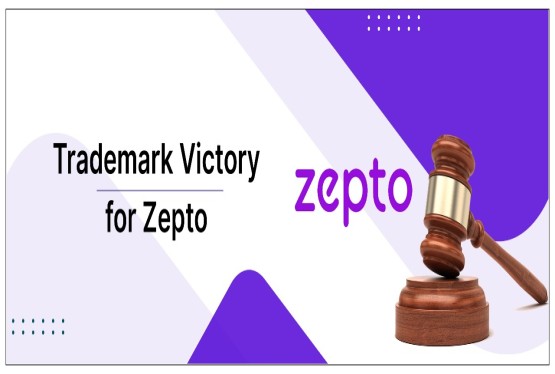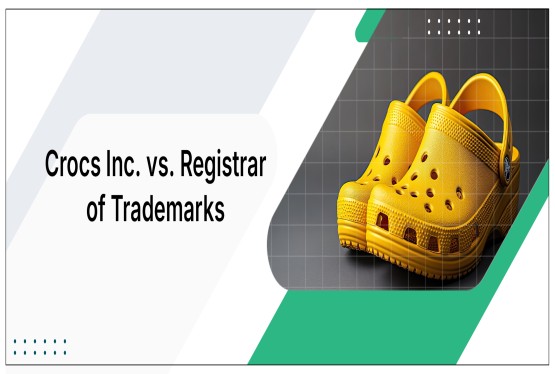Trademark Class 28, part of the Nice Classification (NCL) system, covers goods related to games, toys, and sporting equipment. This category is crucial for businesses in the entertainment, sports, and recreation industries. The trademark registration, trademark infringement, and trademark withdrawal of trademarks under this class fall under the purview of the Trade Marks Act, 1999, in India.
Scope of Trademark Class 28
Trademark Class 28 includes:
-
Toys, dolls, and playthings;
-
Board games and video game equipment;
-
Sporting articles not included in other classes, such as balls, nets, and protective padding;
-
Decorations for Christmas trees.
Exclusions:
-
Certain fitness and sports-related products, such as clothing (Class 25) or dietary supplements (Class 5).
The expansive scope of this class makes it relevant across a broad spectrum of industries, from traditional toy manufacturers to modern gaming companies.
Legal Framework in India
The Trade Marks Act, 1999, governs the registration and protection of trademarks in India, including those under Class 28. Key provisions impacting this class include:
1. Section 9: Absolute Grounds for Refusal: A mark can be refused if:
-
It lacks distinctiveness;
-
It is descriptive of the goods or their characteristics (e.g., "Soft Ball" for sporting goods);
-
It has become customary in the trade.
2. Section 11: Relative Grounds for Refusal: Conflicts with earlier trademarks in Class 28 or related classes (e.g., "FunPlay" for toys conflicting with "FunPlay Sports") may lead to rejection.
3. Section 29: Infringement: Using a mark that is identical or deceptively similar to a registered trademark for goods in Class 28 constitutes infringement.
4. Section 30: Limits to Trademark Protection: Certain uses, such as descriptive use or good-faith indications of the kind or purpose of goods, do not amount to infringement.
Judicial Precedents
1. LEGO Juris A/S v. Jayant Satish Kumar Patel (2018): LEGO, a globally recognized brand for toys, successfully defended its trademark in India against infringement by a local manufacturer. The court emphasized that well-known marks under Class 28 enjoy broader protection, including against unrelated goods.
2. Mattel, Inc. v. Radha Industries (2016): Mattel, the manufacturer of Barbie dolls, brought an action against Radha Industries for selling counterfeit Barbie products. The court upheld Mattel’s rights under Class 28, highlighting the importance of trademarks in protecting brand value and consumer trust.
3. Nintendo Co. Ltd. v. Multivision Electronics Pvt. Ltd. (2015): This case involved the unauthorized use of the Nintendo trademark for gaming equipment. The court ruled in favor of Nintendo, reiterating that trademarks for gaming goods under Class 28 must not be misappropriated to deceive consumers.
4. Hasbro Inc. v. Anand Toys (2021): Hasbro, known for board games like Monopoly, sued Anand Toys for selling similar products under a deceptively similar name. The court applied the principle of likelihood of confusion and ruled in favor of Hasbro.
Challenges in Trademark Protection for Class 28
1. Proving Distinctiveness: Many goods in Class 28, such as generic toy designs or common sporting equipment, struggle to meet the distinctiveness requirement. Brand owners often need to demonstrate acquired distinctiveness through extensive use.
2. Counterfeiting and Infringement: Toys and gaming equipment are frequent targets of counterfeiting, particularly in the unorganized market. Counterfeits not only dilute brand value but also pose safety risks to consumers.
3. Overlap with Other Intellectual Property: Designs for toys and gaming equipment may overlap with copyright or design law. For instance, the shape of a toy may be protected under the Designs Act, 2000, but its name and logo are protected under trademark law.
4. Evolving Technologies: With advancements in technology, the line between physical and digital goods is blurring. For example, virtual gaming equipment and in-game purchases present new challenges for trademark classification and enforcement.
International Perspective
Trademark Class 28 has significant implications in global markets. Key international cases include:
1. LEGO v. Mega Bloks (European Union): The EU courts addressed the registrability of LEGO’s brick design as a trademark. While LEGO was unable to register the functional design, the case emphasized the importance of distinguishing functional elements from trademarkable features.
2. Sony v. Bleem (United States): This case dealt with trademarks for gaming consoles and emulators, highlighting the interplay between trademarks and technological innovation in Class 28.
Practical Considerations for Businesses
1. Comprehensive Searches: Conducting thorough searches within Class 28 and related classes is essential to identify potential conflicts and assess registrability.
2. Focus on Brand Building: Establishing a strong brand identity through marketing and consumer engagement can enhance distinctiveness and help overcome objections during registration.
3. Monitor Infringements: Regular monitoring and prompt enforcement actions are critical to protect trademarks in Class 28 from counterfeiting and unauthorized use.
4. Dual Protection Strategies: Businesses should consider combining trademark protection with other IP rights, such as copyright or design registration, to ensure comprehensive protection for their products.
5. Adapt to Emerging Technologies: As virtual and augmented reality products gain traction, businesses should consider expanding their trademark strategies to cover digital goods and services.
Case Study: The Success of LEGO
LEGO’s trademark strategy serves as a model for businesses in Class 28. By focusing on both physical and digital products, LEGO has secured extensive IP protection, including trademarks for its name, logo, and iconic figurines. The company’s proactive approach to enforcement, including litigation and anti-counterfeiting measures, has helped it maintain its market dominance.
Conclusion
Trademark Class 28 plays a vital role in protecting brands across the gaming, toys, and sports industries. While the Trade Marks Act, 1999, provides a robust framework for registration and enforcement, businesses must navigate challenges such as distinctiveness, counterfeiting, and technological advancements. By leveraging judicial precedents, international best practices, and strategic planning, brand owners can secure and maximize the value of their trademarks in this competitive domain. As the landscape continues to evolve, particularly with the rise of digital goods and virtual gaming, the scope and application of Class 28 trademarks will require ongoing vigilance and innovation.
Frequently Asked Questions
Q1. What goods are covered under Trademark Class 28?
Ans. Trademark Class 28 encompasses a wide range of goods related to games, toys, and sporting equipment. This includes toys, dolls, board games, video game equipment, sporting articles (like balls and nets), and even decorations for Christmas trees.
Q2. What are the key legal provisions in India that govern trademarks in Class 28?
Ans. The Trade Marks Act, 1999, governs trademarks in India. Relevant provisions include Section 9 (absolute grounds for refusal), Section 11 (relative grounds for refusal), Section 29 (infringement), and Section 30 (limits to trademark protection). These sections provide the legal framework for determining the validity and enforceability of trademarks within this class.
Q3. What are some of the challenges in protecting trademarks in Class 28?
Ans. Challenges in protecting trademarks in Class 28 are:
(a) Proving Distinctiveness: Many goods in this class have generic or descriptive characteristics, making it challenging to establish a unique and protectable trademark.
(b) Counterfeiting: Toys and gaming equipment are highly susceptible to counterfeiting, which can significantly impact brand value and consumer safety.
(c) Overlap with Other IP Rights: Designs for toys and games may also be subject to copyright or design law, requiring careful consideration of the applicable legal framework.
(d) Evolving Technologies: The rise of virtual and augmented reality gaming presents new challenges for trademark classification and enforcement.
Q4. How can businesses strategically protect their trademarks in Class 28?
Ans. Businesses strategically protect their trademarks in Class 28
(a) Conduct thorough trademark searches to identify potential conflicts.
(b) Focus on building a strong brand identity through marketing and consumer engagement.
(c) Implement robust anti-counterfeiting measures to combat the proliferation of counterfeit goods.
(d) Utilize dual protection strategies by seeking both trademark and copyright protection where applicable.
(e) Adapt to the evolving technological landscape by expanding trademark protection to cover digital goods and services.
Q5. What are some key takeaways from landmark cases like LEGO v. Jayant Satish Kumar Patel and Mattel v. Radha Industries?
Ans. These cases demonstrate the importance of:
(a) Recognizing the broader protection afforded to well-known trademarks in Class 28, even against unrelated goods.
(b) Upholding trademark rights to protect brand value and consumer trust.
(c) Enforcing trademark rights to combat counterfeiting and protect against unauthorized use.
(d) Applying the principle of likelihood of confusion to determine trademark infringement.






























_(b)_of_the_Trademark_Act,_1999_(1)_crop10_thumb.jpg)



_crop10_thumb.jpg)




























_crop10_thumb.jpg)
_crop10_thumb.jpg)






_crop10_thumb.jpg)








_crop10_thumb.jpg)
_crop10_thumb.jpg)



_crop10_thumb.jpg)





























_crop10_thumb.jpg)

















_crop10_thumb.jpg)






_crop10_thumb.jpg)











































































































































_crop10_thumb.jpg)




































_crop10_thumb.jpg)












_crop10_thumb.jpg)






















